
Marlboro at Sixty
August 2, 2011
The following article appeared in a booklet, “60th Anniversary Reflections on Marlboro Music”, that celebrated the event with a weekend gathering at Marlboro on July 9 and 10 of hundreds of participants past and present from all corners of the globe.
In August, 1957, Jaime Laredo and I, two young violinists hoping for a career in music, visited the Marlboro Music School for the first time. We wanted to see for ourselves the place where outstanding musicians young and old, famous and unknown, gathered in idyllic surroundings to play chamber music all summer long. Jaime and I had driven from Meadowmount, a string camp in the Adirondack Mountains where we had just spent the summer. Listening to the concert that evening in Marlboro’s unprepossessing dining room, I was struck by the difference between the two places. At Meadowmount, we spent hours daily learning to play the violin as well as possible. At Marlboro, the magic of the performances we were hearing brought home why any of us learn a musical instrument to begin with. Such was the impression left with me that now, over fifty years later, I can still remember the program: Brahms Horn Trio, Opus 40, Beethoven Clarinet Trio, Opus 11, and Schubert Octet, Opus 166, and I remember some of the concert’s performers as well: Rudolf Serkin, pianist, Alexander Schneider, violinist, Herman Busch, cellist, Harold Wright, clarinetist, and Myron Bloom, French horn. The next afternoon’s closing summer concert was also indelibly etched in my mind with a performance of Beethoven’s Choral Fantasy, Opus 80. Rudolf Serkin, one of the school’s founders, was the piano soloist. Serkin’s playing seemed more like an awe-inspiring act of nature rather than simply a fine performance. I left the concert that day feeling as if I had arrived at a place inhabited by musical giants.

Rudolf Serkin, pianist, and Arnold Steinhardt, violinist, in conversation at Marlboro, 1980. Photo by Dorothea von Haeften.
Two years later, I was invited to be a participant at Marlboro, and to my astonishment, the school expected me, an inexperienced violinist of twenty-two, to make music with those very giants. Almost immediately, Alexander Schneider, Sascha as he was known to everyone, informed three of us that we were to study Bartok’s Second String Quartet, Opus 17, with him, a work none of us knew. As second violinist of the Budapest String Quartet, Sascha had performed the Bartok innumerable times. During rehearsals, Sascha coaxed, advised, admonished, and sometimes yelled instructions concerning complex rhythms, shifting tempos, and the music’s essential nature. The three of us were swept along by his energy and forceful vision of the work. Not long after, we walked out onto the dining room stage and implausibly gave a creditable performance of Bartok’s Second String Quartet. The great Marlboro experience had just begun for me. Over the next eleven years, I studied innumerable works with innumerable musicians and performed thirty-eight times.
The images of my past Marlboro experiences come flooding back easily if I let them: Flutist Marcel Moyse, another founding member, leaning over my viola part of the Debussy Trio for Flute, Harp, and Viola and instructing me to ignore a printed crescendo. Debussy himself had told Moyse that he changed his mind about the marking. Violinist Felix Galimir critiquing bar for bar and by memory a performance we had given of Alban Berg’s Quartet, Opus 3. He had worked with Berg personally and knew every note of the quartet intimately. Pablo Casals, the great Catalonian cellist, exhorting me to play Bach with the kind of freedom usually reserved for gypsy violinists. Reading through Beethoven Sonatas with Rudolf Serkin in the great German violinist Adolph Busch’s studio on a hot late summer day, all the while hoping that some of the magic of Serkin’s playing and Busch’s aura would somehow rub off on me.
At Marlboro, we learned from these great mentors, from the inspired chamber music repertoire, and inevitably from each other. Chamber music taught us how to wear many hats—that of a brilliant soloist, of a team ensemble player, and of a humble accompanist—and it demanded that we be able to change those hats quickly and nimbly. It taught us the art of suggesting rather than demanding in rehearsals, and the value of accepting criticism gratefully rather than with hurt feelings. Out of Marlboro’s fertile soil, participants not only became more complete musicians but many crafted life-long chamber music careers as well. Jaime Laredo and I, the two young and curious kids who visited Marlboro in 1957, were among those who eventually formed long lasting professional chamber music ensembles. In 1964, four of us, with Marlboro’s encouragement and guidance, became the Guarneri String Quartet, a group that would perform on the world’s concert stages for the next forty-five years.
Not once in all the years I studied the violin did any of my teachers mention chamber music as an essential part of a young musician’s education. Indeed, I entered the Curtis Institute of Music at the age of seventeen without ever having studied or performed even a single string quartet. I learned years later that several of my violin teachers played chamber music for their personal enjoyment, but my lessons were only about the solo repertoire—concertos, challenging and brilliant etudes, and dazzling show-pieces. That was fine with me. Like many of my violin-playing friends, I wanted to be the next great soloist. And Curtis, geared to be the ultimate training ground for future soloists and top-notch orchestral players, did nothing to dispel that notion. I entered the school in 1954, a time when chamber music was considered more an elective than anything else. My first chamber music experience there, studying Mozart’s G Major String Quartet, K387, with Jascha Brodsky, the first violinist of the Curtis String Quartet, was not a completely happy one. The music was unquestionably attractive, but despite Brodsky’s expert advice and encouragement, I found it highly uncomfortable to play well while having to fit in with three others who often had maddeningly different ideas about Mozart. And Brodsky not only demanded a unified musical concept but he also expected us to play together and in tune at all times. After we had finished studying the work, I concluded that playing string quartets was the equivalent of being put into a musical straight jacket. Better to plug away at those scales, etudes, and the virtuoso repertoire, and dream on about a solo career. Still, chamber music began to surreptitiously sneak up on me and on many of my school friends. It was surprisingly satisfying to gather for music parties in which we read through music late into the night—in the process discovering one by one the miraculous creations of Haydn, Mozart, Beethoven, Schubert, and on and on. Two of the students with whom I shared those very first encounters with chamber music, John Dalley and Michael Tree, were to become future founding members of the Guarneri Quartet. Having become superficially acquainted with these masterpieces, the natural next step was to study them more seriously at school. How moving it was to finally perform a Brahms two-viola quintet, the Two Cello Quintet of Schubert, or a late Beethoven string quartet.
Once the applause for these student performances had died down, however, it was back to hours of solo repertoire practice in preparation for the competitions we planned to enter and hoped to do well in. Winning a major competition was an important first step for a would-be soloist. Playing chamber music might be deeply gratifying, but not once did I hear any of us planning to play string quartets professionally, and for good reason. You could count on less than the fingers of one hand the number of string quartets making a living in America solely from concert fees. There was the Budapest Quartet, perhaps the very young Juilliard, and then many others that had to supplement their quartet income with teaching and other work.
It is almost impossible to exaggerate the importance of Marlboro in the formation of many professional chamber music ensembles including the Guarneri Quartet. But even more significant is the role it played in changing people’s attitudes about chamber music in general. The classical music profession was a somewhat segregated place when I was in school. Concert managers strongly advised musicians trying to nurture a solo career not to play chamber music in public. They warned that it would send the wrong message. After all, those who performed chamber music were failed soloists, weren’t they. But then Marlboro, established in 1951, arrived on the scene. Word spread quickly amongst music lovers but also to music students everywhere that there was a place in the verdant, rolling hills of Southern Vermont where chamber music of the highest order was being played. What’s more, three of its founding members, Adolph Busch, Rudolph Serkin, and Marcel Moyse were not only great musicians but internationally known and venerated soloists as well. The powerful message broadcast by Busch, Serkin, Moyse, and such revered artists as Pablo Casals who followed at Marlboro was that it was fine to be a soloist, fine to be a chamber musician, and even better to be both.
John Dalley, David Soyer, Michael Tree, and I, four musicians with separate professional lives, kept returning to Marlboro year after year in the early 1960s. It was hard to keep away given the golden opportunity we had to study the great chamber music repertoire thoroughly and at leisure without the pressure of performance, an unheard of phenomenon at most music festivals. (Then and now, only a small percentage of works studied at Marlboro make it to the concert stage.) Often, I would find myself in a group with David, John, or Michael. We admired each other’s playing and got along very well. At some point, the four of us began talking over lunch and between pranks that were an endearing Marlboro fringe benefit about the possibility of forming an ensemble together—but not just any ensemble—a string quartet. Each of us harbored a special love for the string quartet’s enormously rich repertoire and a reverence for the impact that a mere four voices could wield when they joined forces. Albert Einstein once said that things should be as simple as possible, but no simpler. That, exactly, is what I felt so acutely years earlier at Marlboro when Sascha had drafted three of us into the study and eventual performance of Bartok’s Second String Quartet. The emotional and substantive effect of four individual voices brought together by a master such as Bartok was staggering. Wouldn’t it be a dream-come-true to start a string quartet?
Rudolf Serkin promised us time the next summer at Marlboro to rehearse on our own, and also presented us with a bottle of champaigne. Sascha Schneider advised us on the dos and don’ts of quartet life (no critiquing after concerts, for example), and offered us a debut concert in New York City for the next season. Four individuals who were drawn into Marlboro’s powerful gravitational field had finally decided on forming what was to become the Guarneri String Quartet. On a late summer day in 1963 when the leaves were already beginning to turn color, the newly constituted quartet, but one still nameless, without a manager, and with no guarantee of a future career, sat down in a tiny music room at Marlboro and read through Mozart’s String Quartet in D Minor, K421. I remember thinking that I had died and gone to heaven, such was the beauty of Mozart and the sense of our four voices bound together in glorious music making. John Dalley laughed when I recalled my memories recently. He thought that those first notes out of our quartet had sounded terrible. It was such a Marlboro moment. At Marlboro, opinions are always flying about along with wadded napkins in the dining hall. A visitor might at any moment overhear: “Must we make that ritard,” or “What? You think Poulenc is a great composer?!”, or “The last movement sounds like we have a train to catch,” or “You’d take Bach if marooned on a desert island? Definitely Schubert for me.” All this—the music making, the discussions, the countless interactions with musicians I deeply admire—is the Marlboro I know and love, the Marlboro that in large part has shaped who I am as a musician.
After an absence of over three decades, I am again a participant in Marlboro. By some sleight of hand, many of us who were once youngsters here are now mentors to the next generation. It is a heavy responsibility but a fulfilling one. Marlboro’s newest young musicians are as gifted as ever. Since returning, I have again and again heard moving performances that transcend polished ensemble and solid musicianship. This “goose bump factor” as I like to think of it is what Marlboro is all about, and this is what the present directors, Mitsiko Uchida and Richard Goode, represent. They are wise and vastly experienced musicians, but above all, they are artists. When all is said and done, it is the magic of their performances at the school (as with Rudolph Serkin’s in past years) that will inspire the new crop of young musicians to search for their own brand of magic. As the Marlboro School prepares to celebrate its sixtieth birthday this year, I have the same feeling I had over a half a century ago. The place is inhabited by musical giants. But I have another thought. Marlboro is the perfect training ground for our future musical giants.
Subscribe
Sign up to receive new stories straight to your inbox!








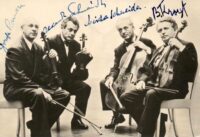





















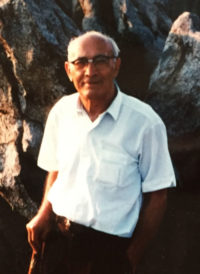


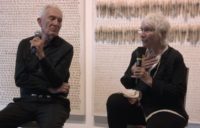


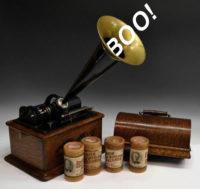
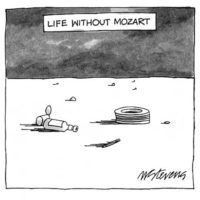















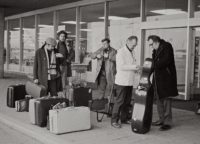



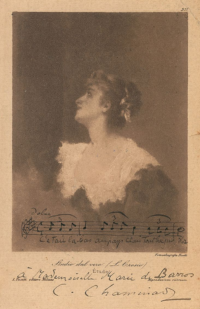




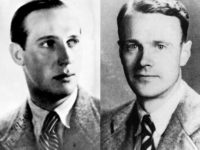


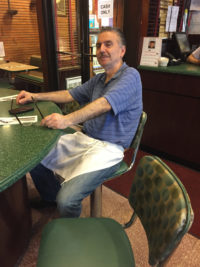



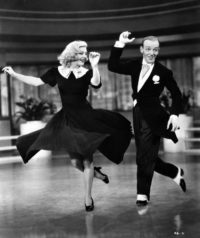







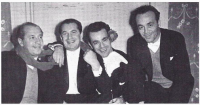
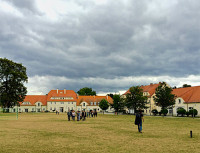
























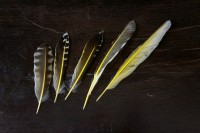

























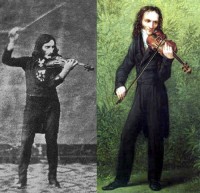



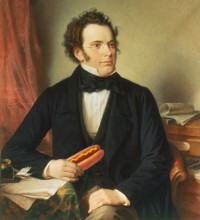

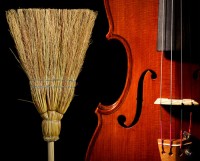





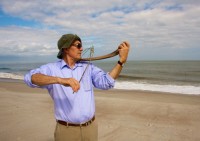























Comments
Dear Mr. Steinhardt,
Thank you for sharing another interesting and enriching article :-)
Best regards,
lien
Thanks very much for another wonderful post to Fiddler’s Beat. I really appreciate your sharing these stories, and it is so interesting to learn about the early years of now famous soloists and ensembles. What amazing experiences you must have had through the years at Marlboro. I wish you many more as you return as a mentor at Malboro, and hope to hear about your experiences working with the young players.
Maestro: Many, many thanks for your fine writing and fantastic chamber music stories of Marlboro. I so admire you as a musician and as a person. How very lucky you are to have been nurtured in chamber music by so many great musicians, most especially by my musical mentor and idol Mr. Serkin, and now you are a mentor yourself! How fantastic musical life is! May you continue to play, encourage and educate for many years to come, along with Richard, Mitsuko, Michael, and the other legends. My very best regards to you!
Leave a Comment
*/